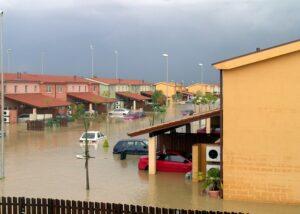25% more expensive than the average for the last decade

According to Gallagher Re, active global natural disasters occurred in the first half of 2024, resulting in near-average financial expenditures for governments and insurance companies. The economic loss from all natural disasters was at least $128 billion, slightly lower than the most recent 10-year H1 average of $133 billion.
This damage was paid by the private insurance market and public insurance bodies for at least $61 billion, which is 25% greater than the decadal average of $49 billion. The higher frequency of small- to medium-sized severe convective storm (SCS) events with adequate insurance coverage in the United States was blamed for the above-average insured losses.
Gallagher Re’s most recent report states that as claims submissions and processing proceed, H1 loss totals are projected to rise further during the year.
Excluding damages from earthquakes, volcanoes, and other non-atmospheric phenomena, weather and climate-related disasters cost at least $113 billion. This value comes close to the decadal average of $117 billion.
This is the sixth straight H1 with weather and climate-related economic losses totaling or exceeding $100 billion. Gallagher Re estimates that insurers covered at least $57 billion of these losses, 22% more than the decadal average of $46 billion.
As the sector enters the second half of the year, there is a greater emphasis on the Atlantic hurricane season. Colorado State University, a new collaborating partner with the Gallagher Research Centre, predicts a hyperactive season. This forecast is heavily influenced by record warmth in the Atlantic Ocean and the shift from El Niño to La Niña conditions in the central and eastern Pacific Ocean.
Gallagher Re emphasises the need for the insurance industry to be ready for a potentially difficult second half of the year. Land and ocean temperatures broke global records for 13 months in a row from June 2023 to June 2024, contributing to more unpredictable and intense events in 2024.
The total economic loss for H1 2024 was preliminarily estimated at $128 billion, close to the decadal average of $133 billion. This was driven by at least six individual events resulting in economic losses greater than $5 billion each.
Two of these events occurred in Asia, with one each in the United States, Middle East, Europe, and Latin America. These six events alone accounted for $47 billion, or 37%, of all economic losses during the first six months. Two other U.S. SCS outbreaks were just under $5 billion.
The total insured loss for H1 2024 has been preliminary projected at $61 billion, which is higher than the decadal average of $49 billion. This sum is projected to rise more in the following weeks and months, and it includes losses paid by both the private and public insurance markets.
At least 19 unique billion-dollar insured loss incidents occurred, making this the second-highest H1 total on record, trailing only 20 in 2023 and 2022. Twelve of these occurrences resulted in multibillion-dollar losses, according to Gallagher Re.
What are your opinions about this story? Please feel free to leave your comments below.



